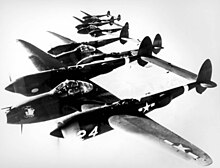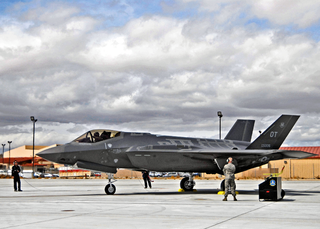
The 53d Wing is a wing of the United States Air Force based at Eglin Air Force Base, Florida. The wing reports to the United States Air Force Warfare Center at Nellis Air Force Base, Nevada, which in turn reports to Headquarters Air Combat Command.

The 328th Armament Systems Wing is an inactive wing of the United States Air Force (USAF). It was last active in 2007, assigned to the Air Armament Center, part of Air Force Materiel Command (AFMC) at Eglin Air Force Base, Florida. It was first activated in 1942 as the 328th Fighter Group and served during World War II as a fighter aircraft training unit until disbanded in 1944 in a major reorganization of the Army Air Forces.

The 326th Aeronautical Systems Wing is an inactive wing of the United States Air Force. It was last assigned to the Aeronautical Systems Center at Wright-Patterson Air Force Base, Ohio, where it was inactivated in 2008.
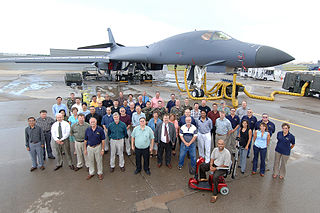
The 327th Aircraft Sustainment Wing is an inactive wing of the United States Air Force last based at Tinker Air Force Base, Oklahoma. It was last assigned to Air Force Materiel Command's Oklahoma City Air Logistics Center.

The 322d Fighter-Interceptor Squadron is an inactive United States Air Force unit. Its last assignment was with the 408th Fighter Group at Kingsley Field, Oregon, where it was inactivated on 1 July 1968.

The 323d Fighter-Interceptor Squadron is an inactive United States Air Force unit. Its last assignment was with Air Defense Command at Ernest Harmon Air Force Base, Newfoundland, where it was inactivated on 1 July 1960.

The 327th Fighter-Interceptor Squadron is an inactive United States Air Force unit. Its last assignment was with the 64th Air Division at Thule Air Base, Greenland, where it was inactivated on 25 March 1960.

The 332d Fighter-Interceptor Squadron is an inactive United States Air Force unit. Its last assignment was with the 4683rd Air Defense Wing at Thule Air Base, Greenland, where it was inactivated on 31 May 1965.

The 539th Fighter-Interceptor Squadron is an inactive United States Air Force unit. Its last assignment was with the 26th Air Division at McGuire Air Force Base, New Jersey, where it was inactivated on 31 August 1967.

The 329th Fighter-Interceptor Squadron is an inactive United States Air Force unit. Its last assignment was with Los Angeles Air Defense Sector at George Air Force Base, California, where it was inactivated on 1 July 1967.

The 518th Fighter-Interceptor Squadron is an inactive United States Air Force unit. Its last assignment was with Air Defense Command's 408th Fighter Group at Klamath Falls Airport, Oregon, where it was inactivated on 1 July 1959. The squadron was first activated during World War II as a dive bomber unit, but was disbanded before participating in combat in a general reorganization of Army Air Forces training units. It was reconstituted during the Cold War as a fighter interceptor unit supporting the air defense of the United States.

The 42d Flying Training Squadron is an inactive United States Air Force unit, last assigned to Air Training Command at Columbus AFB, Mississippi, where it was inactivated on 15 December 1991.

The 84th Combat Sustainment Group is an inactive United States Air Force (USAF) group last assigned to the 84th Combat Sustainment Wing at Hill Air Force Base, Utah, where it was inactivated in 2010. The group was formed in 1942 as the 84th Bombardment Group, one of the first dive bomber units in the United States Army Air Corps and tested the Vultee Vengeance, proving that aircraft unsuitable as a dive bomber. As an Operational Training Unit, it was the parent for several other bombardment groups, but from 1943 until it was disbanded in 1944, trained replacement aircrews as a Replacement Training Unit designated the 84th Fighter-Bomber Group.

The 519th Fighter-Interceptor Squadron is an inactive United States Air Force unit. Its last assignment was with the 521st Air Defense Group at Sioux City Municipal Airport, Iowa, where it was inactivated on 18 August 1955. The squadron was first activated during World War II as the 637th Bombardment Squadron, a dive bomber unit, but was disbanded before participating in combat in a general reorganization of Army Air Forces training units. It was reconstituted during the Cold War as a fighter interceptor unit supporting the air defense of the United States.
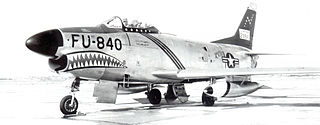
The 520th Fighter-Interceptor Squadron is an inactive United States Air Force unit. Its last assignment was with 530th Air Defense Group, stationed at Geiger Field, Washington, where it was inactivated on 18 August 1955. The squadron was first activated during World War II as the 638th Bombardment Squadron, a dive bomber unit, but was disbanded before participating in combat in a general reorganization of Army Air Forces training units. It was reconstituted during the Cold War as a fighter interceptor unit supporting the air defense of the United States.
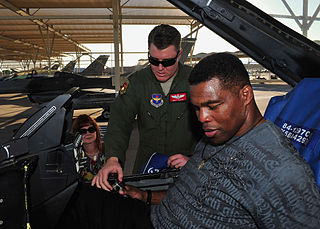
The 56th Training Squadron is an active United States Air Force unit. It is assigned to the 56th Operations Group at Luke Air Force Base, Arizona.

The 14th Fighter-Interceptor Squadron is an inactive United States Air Force unit. Its last assignment was with the 53d Fighter Group at Sioux City Municipal Airport, Iowa, where it was inactivated on 1 April 1960.

The 501st Combat Support Group is an inactive United States Air Force organization. It was last active as part of the 501st Tactical Missile Wing at RAF Greenham Common, England, where it provided support for the wing and tenant organizations as the host organization for Greenham Common rom 1982 to 1991.

The 408th Armament Systems Group is an inactive United States Air Force (USAF) unit. Its last assignment was with Air Force Materiel Command's 308th Armament Systems Wing at Eglin Air Force Base, Florida. It was inactivated in 2010.
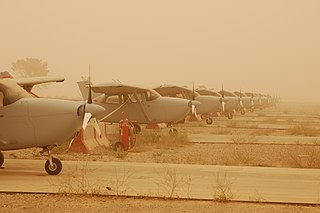
The 337th Aeronautical Systems Group is an inactive United States Air Force unit. Its last assignment was with the Aeronautical Systems Center of Air Force Materiel Command at Wright Patterson Air Force Base, Ohio, where it was inactivated in 2008.



